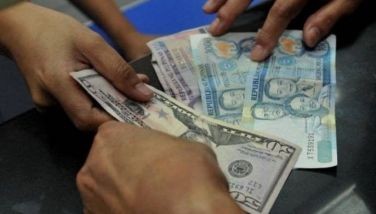DOT launches ‘An Island in Your Name’ campaign to attract Japanese visitors
September 25, 2005 | 12:00am
TOKYO, Japan – Imagine one of the Philippines’ 7,101 islands being named Koji, Teppei or Masake. It seems like a stretch, but that’s the strong come-on of this tropical country’s pitch to grab a bigger slice of the Japanese tourist market.
Department of Tourism (DOT) Secretary Joseph Ace Durano is making a strong bid to bolster the country’s tourism sector, which has perennially lagged behind its more aggressive neighbors like Thailand, Malaysia and Indonesia.
Durano, who attended the JATA World Tourism Congress 2005 here, launched the "An Island in Your Name" campaign which involves raffling off 25 islands of the famous One Hundred Islands that surround the Lingayen Gulf in Alaminos, Pangasinan about 255 kilometers north of Manila.
He clarified, though, that the 25 Japanese raffle winners will not exactly own the islands but, at least for a year, will be welcomed and treated like royalty whenever winners decide to "claim" their island and get to spend a couple of days just soaking in the constant pampering that will be accorded them.
One Hundred Islands, a cluster of 124 islets, are located west of the gulf known for crystal clear azure waters ideal for swimming, snorkeling, fishing and scuba diving.
The 1,844-hectare nature and recreational park, the Hundred Islands National Park is mainly composed of limestone characterized by a wide reef flat. The park boasts of a highly diverse ecosystem that supports a variety of marine and terrestrial flora and fauna, and wildlife resources, while various marine resources such as sea grasses, corals and numerous fish species abound in the waters.
"We chose One Hundred Islands because not one of the islands have been named and because it is so accessible from Manila. We have the cooperation of the local officials and we intend to work and really create a positive response to this campaign," said Durano.
To jumpstart the project, the DOT is collaborating with a Japanese travel promotions company, H.I.S. Co. which also assisted in developing an effective strategy for the campaign.
"I am confident that our project will create a stir, especially among well-traveled Japanese tourists who are constantly looking at new vacation destinations, with this ‘Name an Island in Your Name’ campaign, we know we have an idea that will capture the attention of Japanese tourists," said Durano.
The DOT is focusing on the Japanese tourist market which accounts for the second largest group of visitors to the Philippines after the "balikbayans," compromising mostly of Filipinos residing in the United States.
"Definitely, it is the Japanese market that we want to really get because they are not too price conscious about vacation packages. They are willing to pay for quality and that is what we intend to do for this promo," said Rosvi Gaetos of the Philippine Convention & Visitors Corp., a marketing arm of the DOT.
Gaetos admitted that the Philippine tourism industry is reeling but surviving despite the aggressive positioning, for instance, of Thailand and Malaysia.
"The Philippines has something new to offer, through the "Island in Your Name" campaign, we’re promoting both adventure opportunities and wellness. After the program is completed, we are thinking of expanding the coverage of this project," said Gaetos.
Durano said that the project will boost government’s efforts to persuade tourists to consider the Philippines as one of the world’s premiere vacation destinations. Currently, the Philippines has a measly two percent share of Japan’s estimated 17.4 million outbound travelers yearly.
He said that hopefully, the country’s participation in the World Expo 2005 in Aichi will also help bring in more Japanese big spenders to premiere island destinations in the Philippines.
"We are confident that we can exceed last year’s visitor arrivals from about 382,000 in 2004 to at least 400,000 in 2005. We already posted an eight-percent increase in arrivals in the first six months," Durano noted.
During the course of the World Expo, the DOT team in Japan has been wooing Japan’s corporate leisure market such as car manufacturer Toyota Motor and consumer electronics giant Samsung of South Korea to make the Philippines the choice vacation destination of their respective companies’ top-level executives and employees.
"We want this market which is largely untapped. This market is lucrative and reliable because they have the money to spend," said Durano.
In trying to get a bigger share of Japanese tourists, the DOT, according to Durano is focusing on marketing the Philippines as a choice destination for discriminating Japanese travelers.
Since there is enough tough competition from ASEAN neighbors like Thailand and Indonesia, the Philippines is veering away from these market which offers very low and attractive packages. Indonesia and Thailand mostly attractive the budget-conscious European and American tourists.
Department of Tourism (DOT) Secretary Joseph Ace Durano is making a strong bid to bolster the country’s tourism sector, which has perennially lagged behind its more aggressive neighbors like Thailand, Malaysia and Indonesia.
Durano, who attended the JATA World Tourism Congress 2005 here, launched the "An Island in Your Name" campaign which involves raffling off 25 islands of the famous One Hundred Islands that surround the Lingayen Gulf in Alaminos, Pangasinan about 255 kilometers north of Manila.
He clarified, though, that the 25 Japanese raffle winners will not exactly own the islands but, at least for a year, will be welcomed and treated like royalty whenever winners decide to "claim" their island and get to spend a couple of days just soaking in the constant pampering that will be accorded them.
One Hundred Islands, a cluster of 124 islets, are located west of the gulf known for crystal clear azure waters ideal for swimming, snorkeling, fishing and scuba diving.
The 1,844-hectare nature and recreational park, the Hundred Islands National Park is mainly composed of limestone characterized by a wide reef flat. The park boasts of a highly diverse ecosystem that supports a variety of marine and terrestrial flora and fauna, and wildlife resources, while various marine resources such as sea grasses, corals and numerous fish species abound in the waters.
"We chose One Hundred Islands because not one of the islands have been named and because it is so accessible from Manila. We have the cooperation of the local officials and we intend to work and really create a positive response to this campaign," said Durano.
To jumpstart the project, the DOT is collaborating with a Japanese travel promotions company, H.I.S. Co. which also assisted in developing an effective strategy for the campaign.
"I am confident that our project will create a stir, especially among well-traveled Japanese tourists who are constantly looking at new vacation destinations, with this ‘Name an Island in Your Name’ campaign, we know we have an idea that will capture the attention of Japanese tourists," said Durano.
The DOT is focusing on the Japanese tourist market which accounts for the second largest group of visitors to the Philippines after the "balikbayans," compromising mostly of Filipinos residing in the United States.
"Definitely, it is the Japanese market that we want to really get because they are not too price conscious about vacation packages. They are willing to pay for quality and that is what we intend to do for this promo," said Rosvi Gaetos of the Philippine Convention & Visitors Corp., a marketing arm of the DOT.
Gaetos admitted that the Philippine tourism industry is reeling but surviving despite the aggressive positioning, for instance, of Thailand and Malaysia.
"The Philippines has something new to offer, through the "Island in Your Name" campaign, we’re promoting both adventure opportunities and wellness. After the program is completed, we are thinking of expanding the coverage of this project," said Gaetos.
Durano said that the project will boost government’s efforts to persuade tourists to consider the Philippines as one of the world’s premiere vacation destinations. Currently, the Philippines has a measly two percent share of Japan’s estimated 17.4 million outbound travelers yearly.
He said that hopefully, the country’s participation in the World Expo 2005 in Aichi will also help bring in more Japanese big spenders to premiere island destinations in the Philippines.
"We are confident that we can exceed last year’s visitor arrivals from about 382,000 in 2004 to at least 400,000 in 2005. We already posted an eight-percent increase in arrivals in the first six months," Durano noted.
During the course of the World Expo, the DOT team in Japan has been wooing Japan’s corporate leisure market such as car manufacturer Toyota Motor and consumer electronics giant Samsung of South Korea to make the Philippines the choice vacation destination of their respective companies’ top-level executives and employees.
"We want this market which is largely untapped. This market is lucrative and reliable because they have the money to spend," said Durano.
In trying to get a bigger share of Japanese tourists, the DOT, according to Durano is focusing on marketing the Philippines as a choice destination for discriminating Japanese travelers.
Since there is enough tough competition from ASEAN neighbors like Thailand and Indonesia, the Philippines is veering away from these market which offers very low and attractive packages. Indonesia and Thailand mostly attractive the budget-conscious European and American tourists.
BrandSpace Articles
<
>
- Latest
- Trending
Trending
Latest
Trending
Latest
Recommended




























